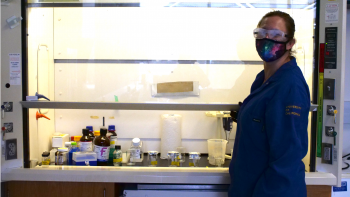
School:
Grade Level:
Teaching Position:
Supervisor:
Department:
Mentor:
Research Project Year:
Research Project Title:
Research Project Description:
Bioluminescence, the biochemical production of light in a living organism, is an ecologically important trait that independently evolved at least 90 times across lifeforms. Although we know the genetic identity of many luciferases, the genetic basis of luciferin biosynthesis is unknown. Here at UCSB, the Oakley lab studies bioluminescent ostracod crustaceans (commonly known as “sea fireflies”), which are are small crustaceans that produce bioluminescence to deter predation and to attract mates (in some species). We aimed to characterize and compare small molecules found in bioluminescent and non-bioluminescent ostracod crustaceans to investigate how luminous ostracods evolved mechanisms to produce luciferin. To answer this question, we extracted small molecules from two species of luminous and one species of non-luminous ostracods and used thin layer chromatography to visualize their small molecules. To test whether the small molecule extracts contained luciferin, we extracted the luciferase protein from luminous ostracods, reacted this protein extract with the small molecule extracts from luminous and non-luminous ostracods, and measured the light emitted from these cross reactions using a photon multiplier tube. Preliminary thin layer chromatography results revealed small molecules that are unique to either luminous or non-luminous species. The cross reaction tests show that non-luminous ostracods do not contain luciferin, which is consistent with previously collected data and our thin layer chromatography results. Future work will use liquid chromatography coupled with mass spectrometry to characterize these small molecules. Ultimately, characterizing and identifying small molecules unique to luminous ostracods will contribute towards identifying the genetic basis of ostracod luciferin biosynthesis, understanding the evolution of these mechanisms used to produce luciferin, and will shed light on the evolution of bioluminescence in ostracod crustaceans.
Curriculum Project Year:
Curriculum Project Title:
Curriculum Project Description:
